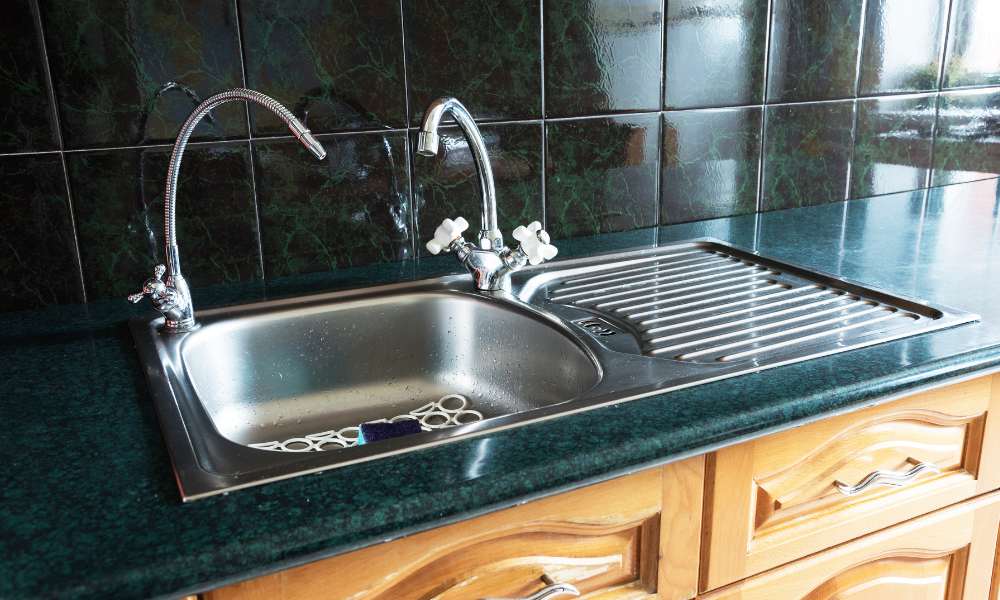Stainless steel sinks are a popular choice in kitchens due to their durability and sleek appearance. However, over time, even stainless steel can develop unsightly rust spots, diminishing its shine and aesthetic appeal. Fortunately, cleaning rust off a stainless steel sink is a straightforward process that requires only a few common household items. In this guide, we’ll walk you through simple and effective methods using baking soda, white vinegar, and lemon juice to restore your sink’s pristine condition. With regular maintenance and proper care, you can keep your stainless clean rust steel sink looking beautiful and rust-free for years to come. Let’s dive into the steps to make your sink sparkle again.
Gather Your Supplies
Before you begin, make sure you have all the necessary supplies:
- Baking soda
- White vinegar
- Lemon juice
- Non-abrasive scrub pad or sponge
- Microfiber cloth
- Olive oil (optional)
Identify the Rust Spots
Thoroughly inspect your sink to locate all the rust spots. Carefully examine the edges, corners, and around the drain where rust is most likely to appear. This detailed inspection ensures you can target the cleaning process more effectively, addressing all affected areas comprehensively.
Create a Baking Soda Paste
Baking soda is a mild abrasive that can help lift rust without scratching the stainless steel. Mix baking soda with a small amount of water to form a thick paste. The consistency should be similar to toothpaste. Ensure the mixture is smooth and evenly blended, making it easy to apply and effective in rust removal.
Apply the Paste to the Rust Spots
Using a non-abrasive scrub pad or sponge, apply the baking soda paste directly onto the rust spots. Gently scrub in a circular motion, allowing the baking soda to work on the rust. Avoid using steel wool or harsh abrasive pads as they can scratch and damage the sink’s surface. Ensure you cover all rusted areas thoroughly for the best results
Let it Sit
After scrubbing, let the baking soda paste sit on the rust spots for about 15-20 minutes. This will give it time to break down the rust particles effectively. During this period, avoid using the sink to ensure the paste remains undisturbed for optimal rust removal.
Rinse and Inspect
Rinse the sink thoroughly with warm water, ensuring all the baking soda paste is washed away. Check the rust spots to see if they have been removed. If some rust remains, you can repeat the process or move on to a more acidic solution, such as white vinegar or lemon juice. Carefully inspect the sink to ensure no residue remains, as this can affect the next cleaning step.
Use White Vinegar for Stubborn Rust
White vinegar is a natural acid that can help dissolve rust. Soak a cloth in white vinegar and place it over the remaining rust spots. Let it sit for about 10-15 minutes, allowing the acid to break down the rust. Then, scrub gently with a non-abrasive pad to remove the loosened rust particles. Rinse the area thoroughly with warm water and inspect to ensure all rust is removed.
Lemon Juice and Salt for Persistent Rust
For particularly stubborn rust spots, mix lemon juice with salt to create a powerful rust-removing paste. The acidity of the lemon juice combined with the abrasive nature of the salt works effectively on tough rust. Apply this mixture to the rust spots and let it sit for about 10 minutes. Scrub gently with a non-abrasive pad, then rinse thoroughly with warm water. Check the sink to ensure all rust has been removed and repeat if necessary.
Polish with Olive Oil (Optional)
To give your sink a shiny finish and add an extra layer of protection, you can polish it with a small amount of olive oil. Apply the oil to a microfiber cloth and buff the sink in a circular motion. This will not only enhance the sink’s appearance but also create a protective barrier that helps repel water and stains.
Regular Maintenance
To prevent future rust, ensure you dry your sink thoroughly after each use. Avoid leaving metal items in the sink for extended periods, as these can cause rust stains. Regular cleaning with a mild detergent and water will help maintain the sink’s shine and prevent rust build-up. Additionally, consider using a stainless steel cleaner occasionally to keep the surface looking pristine and to provide extra protection against rust.
Conclusion
Removing rust from a stainless steel sink can be straightforward with the right approach and materials. By using common household items like baking soda, white vinegar, and lemon juice, you can effectively eliminate rust and restore your sink’s natural shine. Regular maintenance and proper care will keep your stainless steel sink looking beautiful and rust-free for years to come. With a little effort and consistency, your sink will remain a focal point of cleanliness and elegance in your kitchen. How To Clean rust off of stainless steel sink
